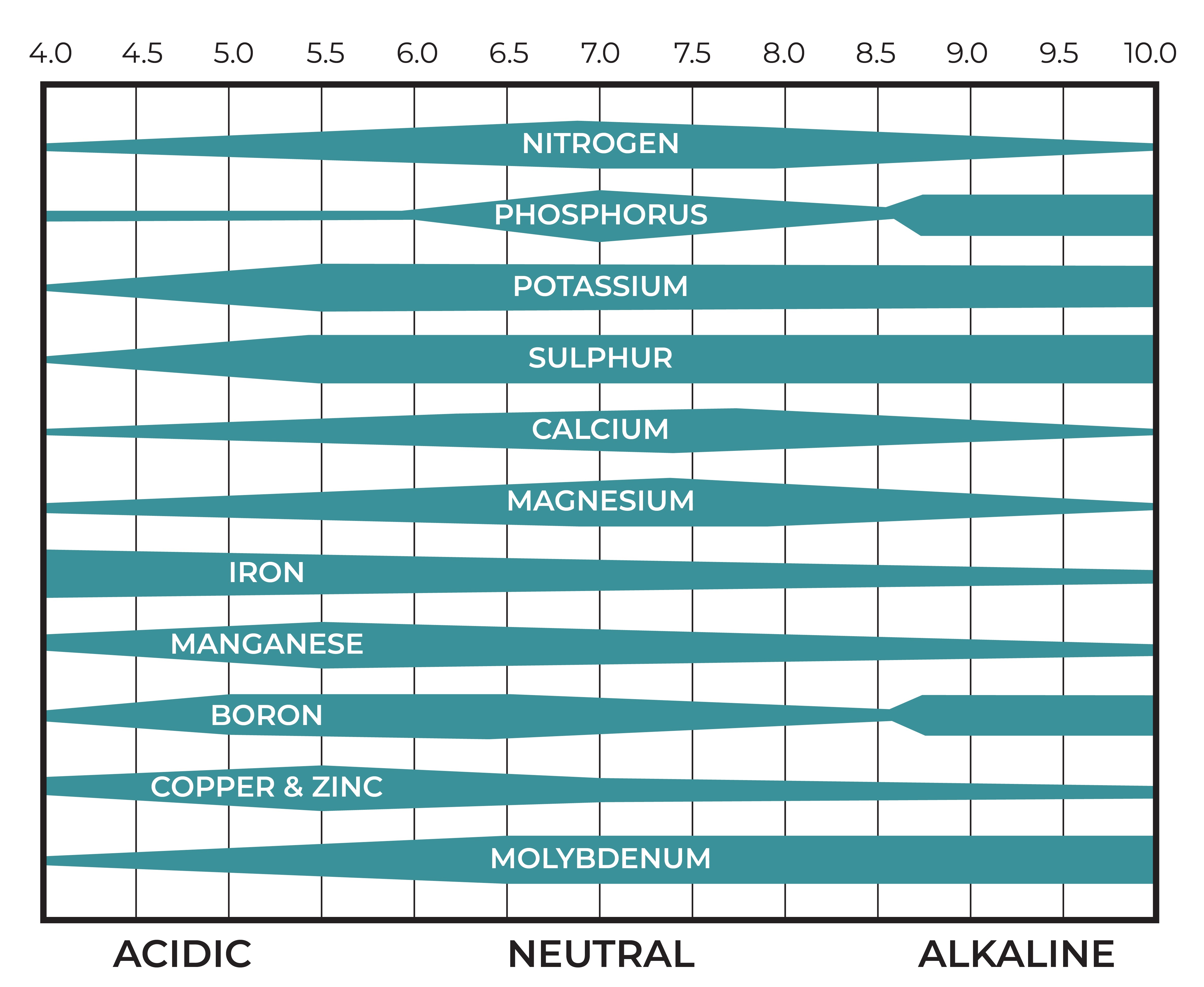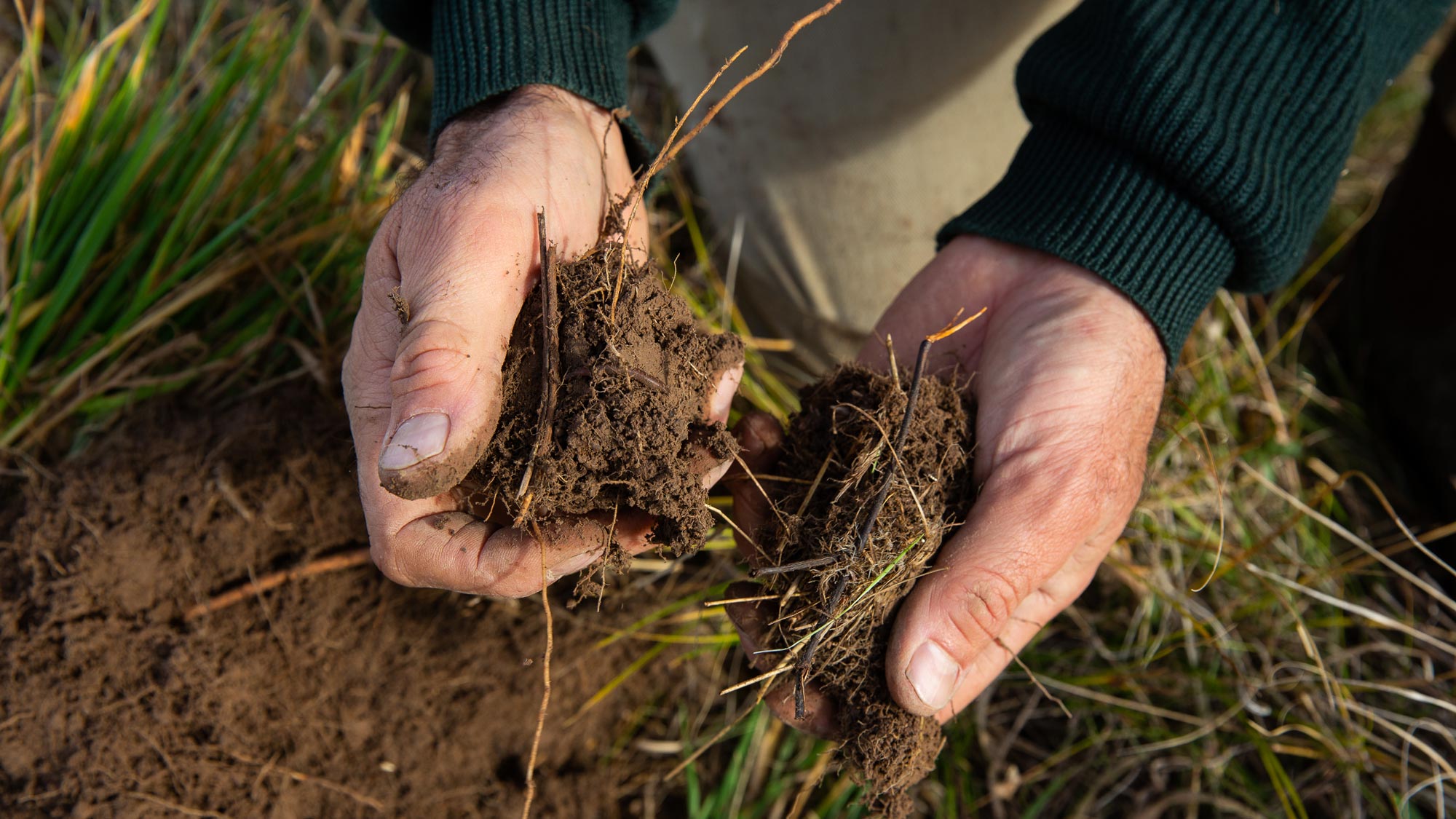Chapter 6.4 Implement solutions for problem soils
Background information
Most farms have some areas of problem soils associated with soil acidity, salinity, sodicity, waterlogging, compaction, or nonwetting sands. Recognising them is always the first step. If you can correctly identify the problem and its extent, you are well on the way towards implementing solutions. Once a problem area is identified, mark it on your farm plan.
Often the presence of indicator plant species can help to identify the problem (see Tool 5.1 for indicators of saline land in MMFS Module 5 Protect Your Farm’s Natural Assets).
At a glance
- Problem soils are likely to be associated with soil acidity, salinity, sodicity, low soil organic carbon, waterlogging, compaction and hard pans, or non-wetting sands.
- Know which of the soils on your farm have these problems and work towards implementing solutions.
- Intervention when issues are small makes far more economic sense than addressing larger issues.
Soil acidity (pH) and aluminium (Al)
Soil acidity and alkalinity are measured as soil pH, which is a measurement of potential hydrogen ions within the soil. Soil pH tests can be done in water (H20) or calcium chloride (CaCl2), but results from the CaCl2 test are more consistent so are the recommended measures to be used in lab soil test results. In-paddock pH testing is done in water.
Many plants prefer slightly acidic conditions – the optimal range is pH(CaCl2) 5.5 to 6.5. If soil pH is below or above this range, the availability of nutrients either declines (leading to deficiencies) or increases (leading to potential toxicities).The pH of the soil strongly influences the availability of essential plant nutrients. Figure 6.16 shows that as pH becomes increasingly low, aluminium, manganese and iron become more available through increased solubility. Plant roots are often affected by aluminium (Al) and manganese (Mn) toxicities as these elements are more soluble in strongly acid soils or when pH(CaCl2) falls below 5.0.

All plants are affected in some way by the degree of acidity or alkalinity of the soil. Some plants grow in a wide pH range, some are sensitive to acidity and others to alkalinity. Soil pH has a major influence on the availability of nutrients required for plant growth. Sudden changes in pH due to addition of soil amendments can significantly influence the availability of nutrients. For acid soils, soil pH can be raised by the addition of lime or dolomite, by reducing the aluminium (Al), iron (Fe) and manganese (Mn), and increasing the availability of molybdenum (Mo), potassium (K), sulphur (S) and phosphorus (P).
Salinity
Salinity is measured using electrical conductivity (EC) by passing a current between a water extract from the soil sample. As salt conducts electricity, the more total soluble salt (TSS), the higher the reading, which is recorded in deci-siemens per metre (dS/m).
Salt tolerance in plants is measured against the EC of the soil, expressed as ECe. ECw (water) is the testing method to measure the total amount of free salt in a soil solution. This is not necessarily what the plant roots are 'exposed' to, as soil texture, soil moisture levels, etc., affect what the plants encounter when they suck in water through their roots. However, the ECe method is costly to do, so it’s more common to use the water method (ECw) and apply a conversion factor based on soil texture.
|
SOIL TEXTURE |
CONVERSION FACTOR |
|
Sand |
13 |
|
Sandy loam |
11 |
|
Loam |
10 |
|
Clay loam |
9 |
|
Light clay |
8 |
|
Heavy clay |
6 |
For example, a clay loam with ECw of 0.1 = 0.9 ds/m.
Plants growing in saline soils may face the combined challenge of high salt levels, waterlogging that exacerbates the salinity impact, and extreme grazing pressure (because sheep have a strong preference for grazing salty areas). This makes them vulnerable to overgrazing and erosion and therefore require land class fencing and careful management to keep pasture cover.
Some saline sites will be naturally occurring (classed primary saline wetlands) and support salt tolerant native plants which should be encouraged. Secondary saline sites (formed by rising salty groundwater tables exacerbated by regional tree clearing) may contain salt tolerant species such as spiny rush or sea barley grass and can be sown to improved species.
Soil structure
Poor soil structure affects root growth and water infiltration. The stability and structure of soil depends on soil organic matter, the levels of calcium (Ca), which hold soils together, and elements which disperse soil, such as magnesium (Mg) and sodium (Na).
Sodicity refers to a soil property where a significant proportion of sodium exists in the soil compared with other cations on the exchange complex. A soil is considered sodic when there is sufficient sodium to interfere with its structural stability, often affecting plant growth. Sodic soils tend to suffer from poor soil structure, including hard-set soils, hardpans, surface crusting and rain pooling on the surface, which can cause problems for erosion, water holding capacity, water infiltration, drainage, water run-off, plant growth, cultivation and access to paddock with machinery.
Useful soil test results include the ratio of calcium to magnesium (Ca:Mg) and the total amount of sodium compared with other elements (called the Exchangeable Sodium Percentage or ESP).
Waterlogged soils
Waterlogging occurs when water fills the soil pores and does not drain away, thereby reducing oxygen availability and reducing plant growth. Waterlogging is generally caused by poor drainage as a result of either too much surface water or sub-surface water. It is important to distinguish the source of the water, as surface drains will have little effect if the issue is caused by too much sub-surface water.
Causes of excess sub-surface water are:
- high clay content of subsoils
- high magnesium within subsoils (Ca:Mg ratio is less than 2:1)
- a ‘hard pan’ from excessive cultivation or underlying rock shelf
- rising groundwater.
Plant production losses in waterlogged soils may also result from nitrate deficiency (lack of oxygen leads to soil nitrates being converted into a form plants cannot use) and fungal diseases (caused by plant roots in waterlogged soils being more susceptible to fungal attack).
Compacted soils
Soil compaction is the compression of a soil into a hard layer (an increase in bulk density) and is most likely to occur from driving heavy farm machinery, cultivating or grazing cattle on wet soils. Hard pans can also occur as a result of repeated disc ploughing.
To determine if a compaction layer exists, use a spade to examine the soil to about 30 cm depth (as you dig you will be able to feel if there is a hard compacted layer) or use a backhoe to dig a deeper soil pit. Compacted soil shows up as a hard, solid layer which can look like bricks rather than loose aggregates. You may see plant roots growing horizontally along the top of the compacted layer or J shaped roots because they cannot grow through it. You can also measure surface soil strength using a penetrometer, which measures the pressure needed to push the rod through the soil.
Non-wetting sands
Water repellence in non-wetting sands is caused by plant waxes that coat the sand particles and prevent water from infiltrating the soil, particularly when it is dry. The result is poor germination and plant growth, and, with large bare areas, it can greatly increase susceptibility to wind erosion.
Techniques to combat the problem include direct drilling, sowing on the contour and sowing into the bottom of furrows with press wheels to improve soil–seed contact and establishment.
Correcting soil problems
Once a problem soil is identified, look for solutions that are feasible, practical and profitable. In some cases, there may be little or nothing that can be done for a problem soil, e.g., shallow or stony soils and permanently waterlogged areas. In these cases, uses other than grazing (such as wetlands and biodiversity or conservation areas) may be a more practical option. Alternate uses need to be feasible and, if possible, profitable, and should be considered as part of your whole farm plan.
Use the questions below to work through the options in a generic sense.
- Can the problem be fixed? Consult with a professional for advice on your soils. If yes, go to 2. If no, go to 4.
- Is fixing the problem likely to be profitable within your current enterprise mix? Is the return on an investment in this soil likely to be comparable to other investments you might make on or off the farm? If yes, take action. If no, go to 3.
- Is the area small enough that you may want to ‘fix it up’ before it becomes a larger issue (you may be seeking aesthetic or other benefits)? If yes, take action. If no, go to 4.
- If it cannot be fixed or is not profitable to fix, are there alternative land uses or tolerant plant species that are practical and profitable? If yes, take action. If no, go to 5.
- If it cannot be fixed and there are no alternative land uses that seem profitable, are there alternative uses that can assist in meeting other farm objectives, such as conservation or biodiversity enhancement?
Tool 6.7 contains detailed information, assistance with diagnosis and management suggestions for a range of soil problems – acidity, sodicity, salinity, waterlogging, compaction and nonwetting sands.
SIGNPOSTS
WATCH
Managing soil fertility and conditions are essential for good pasture and crop growth. Testing soils regularly can help identify if there are components of the soil limiting production and can also identify soils that don’t require inputs.
Healthy soils are fundamental for healthy farming systems. This video is the first of three in a series that shows common paddock indicators of soil condition, designed so that you may start to recognise and diagnose underlying soil problems.
This video is the second of three in a series that looks at the common indicators of soil condition in plants and the pasture.
This video is the last of three in a series that looks at common indicators of soil condition that you see on the soil surface or on the roots of legumes.
This demonstration shows the effect of calcium (from gypsum) on bringing dispersed soil particles together as aggregates to aid in reclaiming soils with high levels of sodium.
David Hall explains the reasons for non wetting in Western Australia’s sandy soils and its impact on crop production
READ
Healthy, fertile soils drive pasture productivity and deliver environmental benefits through improved water and nutrient use with less risk of surface run-off, erosion and deep drainage.
Simple solutions to relevant problems and questions in the effective management of soils to enhance productivity.
A basic guide on the physical characteristics of soil.
Soil health is a concept where all aspects of soil (physical structure, chemical components and biological life) are considered together. Soil issues are those things that impact key soil functions, reducing its health. Information on soil health and several of the soil issues facing agriculture today.
The productivity of saline and waterlogged land can be markedly increased by using salt tolerant legumes and grasses, in mixtures.
USE
Indicators in plants and pasture such as patchy growth, discolouration, sward composition and weed burden can be used to recognise and diagnose underlying soil problems.
ATTEND
A coaching and training package developed to help producers get the most bang for their fertiliser buck. Skills learnt include interpreting a soil test, calculating rate and fertiliser type, prioritisation of paddocks and return on investment using decision guides.
Skills to identify possible soil constraints within southern Australian pasture systems.
Tips and tricks to utilise soil testing as a management tool that gives a measure of soil fertility and conditions.






